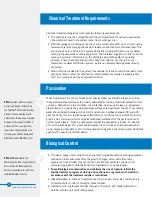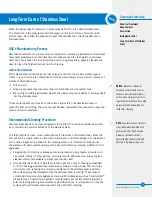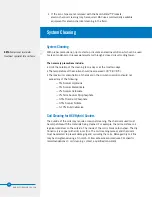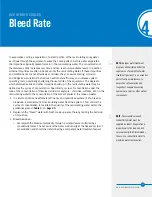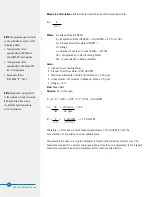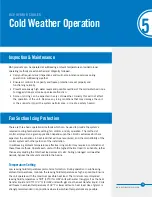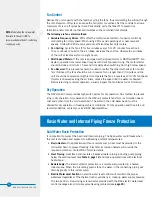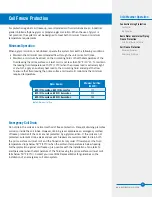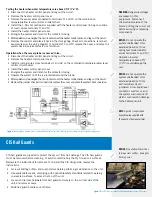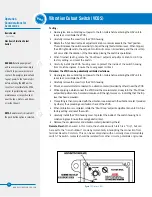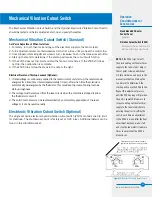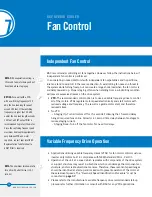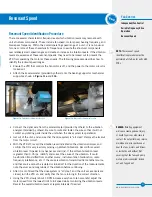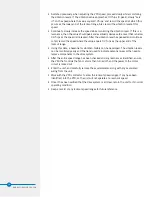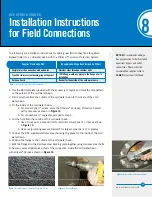
24
Chemical treatment programs must meet the following requirements:
• The chemicals must be compatible with the unit materials of construction as well as
other materials used in the system (pipe, heat exchanger, etc.).
• BAC discourages acid dosing as means of scale control except for open circuit cooling
towers with remote sump applications or towers constructed from stainless steel. This
should be done at a point in the system where total mixing and dilution occur before
reaching the evaporative cooling equipment. The preferred injection point for chemical
scale and corrosion inhibitors is on the discharge side of the system circulating
pump(s). These chemicals should not be batch fed directly into the unit’s cold
water basin or water distribution system, as this can severely damage areas directly
contacted.
• When chlorine is added to the system, free residual chlorine should not exceed 1 ppm,
except as noted in start-up, disinfection, and shutdown procedures. Exceeding this
limit on a routine basis may accelerate corrosion.
Passivation
When new systems are first commissioned, special measures should be taken to ensure
that galvanized steel surfaces are properly passivated to provide maximum protection from
corrosion. Passivation is the formation of a protective, passive, oxide layer on galvanized
steel surfaces. To ensure the galvanized steel surfaces are passivated, the pH of circulating
water should be kept between 6.5 and 8.2 and calcium hardness between 50 and 600
ppm (as CaCO
3
) for four to eight weeks after start-up, or until new zinc surfaces turn dull
gray in color. If white rust forms on galvanized steel surfaces after the pH is returned to
normal service levels, it may be necessary to repeat the passivation process. In case the
pH can’t be kept below 8.2, a secondary approach is to conduct a chemical passivation
using inorganic phosphate or film-forming passivation agents. Consult your water treatment
specialist for specific recommendation.
Biological Control
• The warm, oxygen and nutrient rich environment inside evaporative cooling equipment
provides an ideal environment for the growth of algae, slime, and other micro-
organisms. Uncontrolled, this can reduce heat transfer, promote corrosion, and
promote the growth of potentially harmful organisms such as Legionella.
•
To avoid biological contamination and minimize the risk of
Legionella,
initiate the
biocide treatment program at start-up and continue on a regular basis thereafter in
accordance with the treatment supplier’s instructions.
• Bleed/blowdown or chemical treatment used for corrosion and scale control alone is
not adequate for control of biological contamination.
• Introduce solid or granular biocides through a chemical “pot” feeder installed in
parallel with the unit recirculating pump.
NOTE:
Stainless steel cold water
basins and basins protected by
the TriArmor
®
Corrosion Protection
System or thermosetting hybrid
polymer do not require passivation.
However, if the upper structure is
galvanized steel, passivation is
required on the galvanized area
including any Hot Dip Galvanized
After Fabrication (HDGAF) coil(s).
NOTE:
ASHRAE Guideline 12:
Minimizing the Risk of Legionellosis
Associated with Building Water
Systems is available for free from
www.BaltimoreAircoil.com.
Chemical Treatment Requirements















